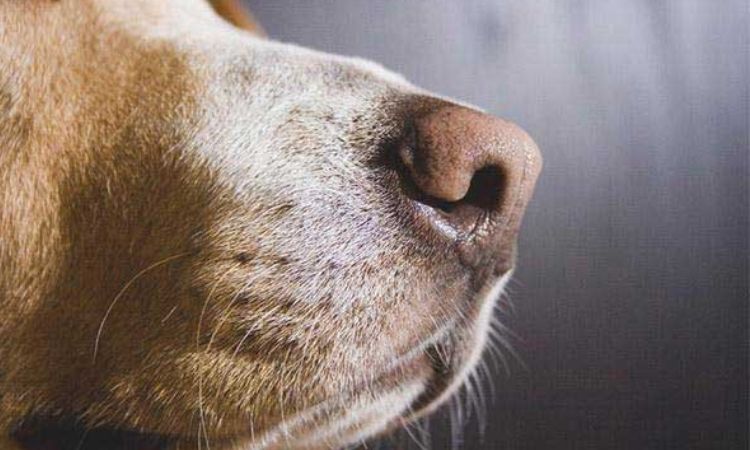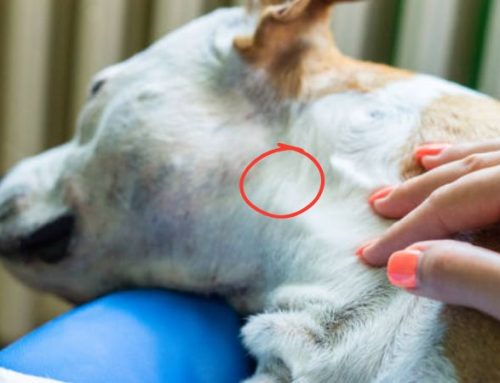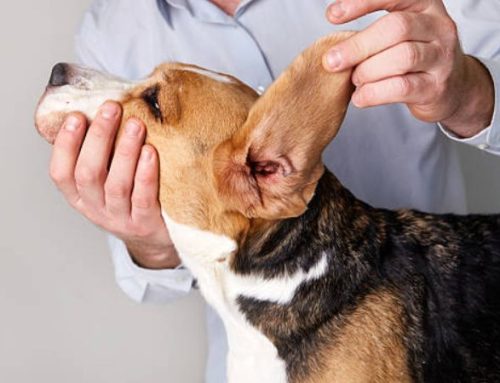Dogs experience the world through scent more than any other sense. With noses far more powerful than ours, even everyday smells can feel intense—or downright unbearable—to them. While some scents make your dog curious or excited, others trigger an instant “nope,” causing them to avoid the area completely.
That reaction can actually work in your favor.
Many of the smells dogs dislike can be used safely and effectively to stop unwanted behaviors like chewing, digging, or having potty accidents in the wrong places. No harsh corrections, no yelling—just smart use of scents that naturally encourage your dog to stay away.
In this guide, you’ll discover 10 smells dogs absolutely hate and simple ways to use them to protect your home, your belongings, and your sanity—while still keeping your pup comfortable and safe.
How Dogs’ Sense of Smell Works (And Why Some Scents Are Too Much)
Dogs experience the world largely through their noses. Unlike humans, who have roughly 5 million scent receptors, dogs can have anywhere from 220 million to 300 million, depending on the breed. This extraordinary olfactory power allows them to detect subtle odors that we would never notice, from tracking food to sensing changes in human emotions.

Because of this heightened sense, scents that seem mild to us—such as citrus, vinegar, or strong cleaning products—can be intensely overwhelming to dogs. Strong or acidic smells can cause stress, anxiety, or simply make an area unpleasant for your pet. Understanding this is key: the goal is never to punish your dog, but rather to guide them gently.
To manage unwanted behaviors around certain areas or objects, pet-safe scent deterrents can be used in combination with positive reinforcement. For example, applying a mild, non-toxic deterrent in a corner you don’t want your dog to explore, while rewarding them for playing or resting in approved spaces, can effectively redirect their attention without causing harm. This approach respects their incredible sense of smell while teaching them where it’s appropriate to explore and sniff.
The 10 Natural Smells Dogs Hate the Most
Dogs have an extraordinary sense of smell, far beyond what humans can perceive. Their noses are equipped with hundreds of millions of olfactory receptors, allowing them to detect scents 10,000 to 100,000 times more acutely than humans. While this incredible gift helps them navigate the world, it also makes them highly sensitive to certain natural smells—some so strong that dogs find them unpleasant or even intolerable. If you’re looking to protect your home, garden, or specific areas from unwanted chewing or peeing, knowing which natural smells dogs dislike can be a safe and effective strategy.
Here are 10 natural scents that most dogs absolutely hate, with guidance on safe uses to keep your pets healthy and happy.
1. Citrus (Oranges, Lemons, Limes, Grapefruit)

Sharp, acidic citrus scents are at the top of the list of smells dogs dislike. The tangy aroma of oranges, lemons, limes, or grapefruit can irritate a dog’s sensitive nose, often causing them to avoid the area completely.
Safe Uses:
- Scatter citrus peels near furniture, doorways, or garden beds to discourage unwanted urination or chewing.
- Use pet-safe citrus sprays diluted appropriately around areas you want to protect.
- Avoid concentrated citrus oils directly on your dog or surfaces your dog might lick, as these can cause irritation or upset stomachs if ingested.
2. Vinegar

Dogs strongly dislike the pungent, acidic odor of white vinegar, making it a popular ingredient in DIY dog deterrent sprays. Its scent is sharp and unpleasant enough to redirect most dogs without causing harm.
Safe Uses:
- Dilute white vinegar with water (typically 1 part vinegar to 3–4 parts water) and spray it on areas where your dog tends to chew or mark territory.
- Always spot-test surfaces to ensure the vinegar solution doesn’t damage wood, fabric, or plants.
- Keep your dog from drinking vinegar solutions, as ingestion in large amounts may upset their stomach.
3. Hot Peppers and Ground Spices

Spicy scents, such as chili peppers, cayenne, or certain pepper blends, are generally avoided by dogs. The intense aroma can irritate their nasal passages and cause sneezing or discomfort, making them effective as a natural deterrent—if used extremely carefully.
Safety Tips:
- Never sprinkle large amounts where your dog can sniff or ingest it directly, as this can cause serious irritation to their nose, mouth, and digestive tract.
- Use only mild amounts outdoors or consider alternative natural deterrents that are safer for your pets.
4. Strong Herbs: Mint, Rosemary, Basil

Many dogs find the strong smell of certain herbs, such as mint, rosemary, and basil, unpleasant, even though humans often enjoy their fresh, aromatic qualities.
Safe Uses:
- Plant potted herbs or lay herb clippings along garden borders to naturally discourage dogs from digging or entering specific areas.
- Avoid spraying herb oils directly on soil where dogs play or might ingest it, as concentrated essential oils can be irritating.
5. Certain Essential Oils (Eucalyptus, Peppermint, Tea Tree – With Caution)

Strong essential oils are disliked by many dogs, especially eucalyptus, peppermint, and tea tree oil, due to their pungent aroma. However, concentrated essential oils can be toxic or irritating to dogs if inhaled or ingested.
Safe Uses:
- Only use vet-approved, dog-safe products or highly diluted sprays in well-ventilated areas.
- Avoid direct contact with your dog, and never apply pure tea tree or other potentially toxic oils unless recommended by a veterinarian.
- Essential oils can be used to create a natural boundary in areas you want your dog to avoid, but always prioritize safety over intensity.
6. Alcohol and Strong Chemical Cleaners

Dogs are extremely sensitive to strong chemical odors, and substances like rubbing alcohol, acetone, and powerful household cleaners produce fumes that are overwhelming to their noses. Inhalation of these harsh smells can irritate a dog’s respiratory tract, eyes, and mucous membranes, sometimes causing sneezing, coughing, or distress.
Safety Advice:
- Do not rely on chemicals as a deterrent to keep dogs away from certain areas; this is unsafe and can harm their health.
- Use strong cleaners only for cleaning purposes, and ensure your dog is removed from the area until all fumes have dissipated.
- Whenever possible, opt for pet-safe cleaning products that are free from harsh chemicals and safe for both indoor and outdoor use.
7. Citronella

Citronella is widely known as a natural insect repellent, but many dogs also find its sharp, pungent scent highly unpleasant. While citronella can help discourage dogs from entering certain outdoor spaces, it must be used with caution.
Safety Advice:
- Avoid spraying citronella directly on dogs, bedding, or areas they frequently touch, as it can be irritating to skin, eyes, and respiratory passages.
- Use citronella sparingly outdoors for garden borders or perimeter deterrents.
- Never rely on citronella as the primary method to prevent marking or chewing; combine with training and positive reinforcement for best results.
8. Garlic and Onion (Not Recommended as Deterrents)

The strong smell of garlic and onions is naturally unpleasant to many dogs, but these foods are toxic if ingested, making them extremely unsafe for homemade deterrent solutions. Garlic contains thiosulfate, and onions contain N-propyl disulfide, both of which can cause hemolytic anemia and other serious health issues in dogs.
Safety Advice:
- Keep all garlic, onion, and related products completely out of reach of pets.
- Avoid using garlic sprays, powders, or similar recipes on furniture, floors, or garden beds, as your dog may inadvertently ingest harmful residues.
- Focus on safe, non-toxic deterrents like citrus, vinegar, or pet-safe commercial sprays.
9. Strong Perfumes and Colognes

Heavy perfumes, colognes, and highly scented sprays may smell pleasant to humans but can be overwhelming or even irritating to a dog’s sensitive olfactory system. These strong scents can cause your dog to avoid areas where they are present, but repeated exposure may also lead to stress or discomfort.
Safety Advice:
- Apply personal fragrances moderately around pets and never spray directly on bedding, crates, collars, or toys.
- If using scented products in your home, ensure good ventilation to reduce the intensity of the smell.
- Remember, dogs rely on their noses to explore and understand their environment; overwhelming scents can interfere with their comfort and well-being.
10. Ammonia and Tobacco Smoke (Avoid Using as Deterrents)

Both ammonia-based cleaning products and tobacco smoke produce strong, pungent odors that dogs naturally avoid. However, these substances are harmful, and using them intentionally as deterrents is unsafe. Ammonia fumes can irritate lungs, eyes, and skin, while tobacco smoke contains numerous toxic chemicals that pose long-term health risks.
Safety Advice:
- Never use ammonia or cigarette smoke intentionally to keep dogs away from areas.
- Maintain smoke-free and well-ventilated environments, and choose pet-safe cleaning alternatives to reduce strong chemical odors.
- Combine safe scent deterrents with positive reinforcement training to teach your dog which areas are off-limits effectively and humanely.
Smells dogs hate for specific problems
Understanding which scents dogs dislike can be a powerful tool for managing unwanted behaviors like chewing, digging, and inappropriate urination. By combining natural scent deterrents with training, enrichment, and supervision, you can address these issues safely and effectively.
What Smell Do Dogs Hate to Stop Chewing?
Dogs often chew on furniture, baseboards, or other household items out of boredom, teething, or instinct. One effective strategy to discourage this behavior is the use of scents they dislike, particularly diluted vinegar or pet-safe citrus sprays.
- How to Apply: Spray or lightly wipe a diluted vinegar solution (one part vinegar to one part water) or a citrus-based spray onto small, inconspicuous areas of the furniture or baseboards.
- Test First: Always spot-test a hidden area to ensure the solution won’t damage wood finishes or painted surfaces.
- Pair With Redirection: Offer your dog appropriate chew toys and redirect their attention whenever they attempt to chew on forbidden objects.
- Reinforce Positively: Praise or reward your dog when they chew their toys instead of furniture. Consistency is key for establishing new habits.
By combining scent deterrents with supervision and redirection, dogs learn to avoid chewing household items while satisfying their natural urge to gnaw safely.
What Smell Do Dogs Hate to Stop Digging?
Digging is a common behavior for many dogs, driven by hunting instincts, comfort-seeking, boredom, or a desire to escape. Natural scents can discourage digging without harming your pet.
- Effective Scents: Dogs often avoid citrus peels, strong herbs like rosemary or rue, or mild chili barriers placed carefully around garden beds.
- Safe Usage: Use mild applications outdoors only and avoid direct contact that could irritate the dog. Citrus peels and herb clippings can be scattered around problem areas to create an unpleasant aroma.
- Combine With Other Solutions:
- Provide plenty of exercise and mental stimulation to reduce boredom-induced digging.
- Create a designated digging zone such as a sandbox or dirt area where your dog is allowed to dig freely.
- Use physical barriers, like chicken wire under soil or stones, to prevent access to sensitive areas.
By combining scent deterrents with structured environmental management and enrichment, dogs can learn where digging is allowed while leaving your garden or yard intact.
What Smell Do Dogs Hate to Pee and Poop On?
Preventing unwanted urination and defecation often involves addressing both odor cleanup and deterrence using scents dogs dislike.
- Start With Cleaning: Use an enzymatic cleaner to remove all traces of urine and feces. This is critical because residual smells can encourage repeat marking.
- Apply Natural Deterrents: After cleaning, apply mild citrus sprays, vinegar solutions, or other safe scent deterrents to areas you want your dog to avoid. Citrus peels can also be placed strategically outdoors.
- Encourage Proper Elimination: Promptly reward your dog for using designated potty areas. Positive reinforcement reinforces the desired behavior.
- Consistency Matters: Regularly reapply scent deterrents to problem areas and continue to reinforce correct elimination habits until the behavior is reliably redirected.
Using these safe, natural smells alongside training ensures that your dog learns where it is appropriate to eliminate, keeping your home and yard clean and odor-free.

How to Use Smells Dogs Hate Safely
Using scents dogs dislike can be an effective way to discourage unwanted behaviors like chewing, digging, or inappropriate urination. However, it’s important to apply these smells carefully to ensure your pet’s safety and comfort. Follow this simple, step-by-step approach for safe and effective use:
Step-by-Step Process
- Identify the Problem Area
Determine where your dog is exhibiting the unwanted behavior—furniture, baseboards, garden beds, or specific spots in your yard. Knowing the exact location helps target your deterrent without over-applying. - Deep-Clean the Area
Before applying any deterrent, clean the area thoroughly. For urine or feces, use an enzymatic cleaner to remove all traces of odor. This ensures the dog is not attracted back to the same spot. - Choose a Safe Scent
Select a natural smell that dogs dislike but is safe for them. Popular options include:- Diluted vinegar (one part vinegar, one part water)
- Citrus peels or citrus-based sprays
- Mild herbs like rosemary, rue, or mint
Avoid concentrated essential oils or harsh chemicals, as these can irritate your dog or be toxic if ingested.
- Test a Small Patch First
Always apply the deterrent to a small, hidden area to check for surface damage (especially on wood or painted furniture) and ensure your dog doesn’t react negatively to the scent in an unsafe way. - Apply Lightly
Apply your chosen deterrent sparingly to the problem area. Over-saturating the area may overwhelm your dog or cause accidental exposure. Citrus peels can be scattered, sprays lightly misted, or herbs placed strategically. - Observe and Adjust
Watch your dog’s reaction carefully. If they avoid the area, the deterrent is working. If not, try reapplying after cleaning or consider combining the scent with other strategies such as redirection, training, or physical barriers.
Example DIY Scent Deterrent Recipes
- Diluted Vinegar Spray
- Mix 1 part white vinegar with 1 part water in a spray bottle.
- Lightly spray areas where your dog chews, digs, or marks.
- Avoid direct contact with plants or delicate surfaces.
- Citrus Peel Sachets
- Collect peels from oranges, lemons, or limes.
- Place them in small cloth bags or scatter them around garden beds or baseboards.
- Refresh peels every few days as the scent fades.
- Herb Barrier
- Chop rosemary, mint, or rue and place around areas your dog tends to dig.
- Optionally, combine with small rocks or fencing for added physical deterrence.
Safety Reminders
- Never spray directly on your dog; these scents can irritate skin or mucous membranes.
- Reapply regularly, especially outdoors, as natural scents fade quickly.
- Combine with training and enrichment: scents work best when paired with appropriate chew toys, designated digging areas, and positive reinforcement.
- Monitor your dog for any signs of distress or allergic reactions when introducing new scents.
Using this process, you can effectively harness smells dogs dislike while keeping your home, yard, and pets safe.
By understanding the smells dogs naturally dislike—like citrus, vinegar, and certain herbs—you can effectively guide their behavior without causing harm. When combined with proper cleaning, positive reinforcement, and designated areas for chewing, digging, or bathroom breaks, these scents become powerful tools for keeping your home, yard, and furniture safe while supporting your dog’s well-being.






